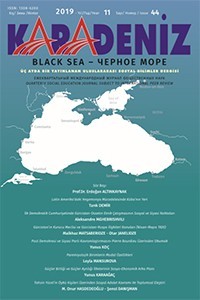МОДАЛЬНАЯ ХАРАКТЕРИСТИКА ПАРЕМИОЛОГИЧЕСКИХ ЕДИНИЦ
MODAL PROPERTIES OF PAREMIOLOGICAL UNITS
Author(s): Leyla MansurovaSubject(s): Semiotics / Semiology, Semantics, Phraseology
Published by: Kültür Ajans Tanıtım ve Organizasyon
Keywords: paremia; modality; component; aphorism-proverb; proverb; quasi-form; thematic class; mood category;
Summary/Abstract: This article discusses the modal meaning of paremias - proverbs and sayings. The results of linguocultural and cognitive-discursive analysis of paremias with modality components in Russian and Turkish are presented. The study makes a certain contribution to the cognition of the worldview of languages, and allows to reveal the features of the national worldview.The inexhaustible source of non-terminological paremias is traditions, customs, culture, beliefs, realities, traditions, epics, historical facts, they at the same time carry in themselves both universal, and specifically national.Of particular interest is the study of the paremiological picture of the world of one language against the background of another, which allows us to establish common and different features in comprehending the world by different peoples and displaying this world in proverbs and sayings, to compare the mentality of peoples manifested in paremias.Proverbs are not simple formations: they are logical units containing certain judgments, conclusions, represent miniatures in which the facts of the living reality of a people are reflected in a bright, concise form, for this reason proverbial sayings attract the attention of linguists, logical philosophers and folklorists.The peculiarity of paremias is that they reflect the essence of minimal texts. These features are manifested in the nature of information content, semiotic structure and semantic motivation of paremias.It must be emphasized that proverbs and sayings have an emotional and stylistic connotation, so that they improve the communicative function of the language.So, being sentences, that is, units with a closed structure, proverbs and sayings have semantic and intonational completeness, categories of predicativity and modality, which distinguishes them from phraseological units, which are most often expressed by a word or phrase.
Journal: Karadeniz Uluslararası Bilimsel Dergi
- Issue Year: 2019
- Issue No: 44
- Page Range: 62-75
- Page Count: 14
- Language: Russian

